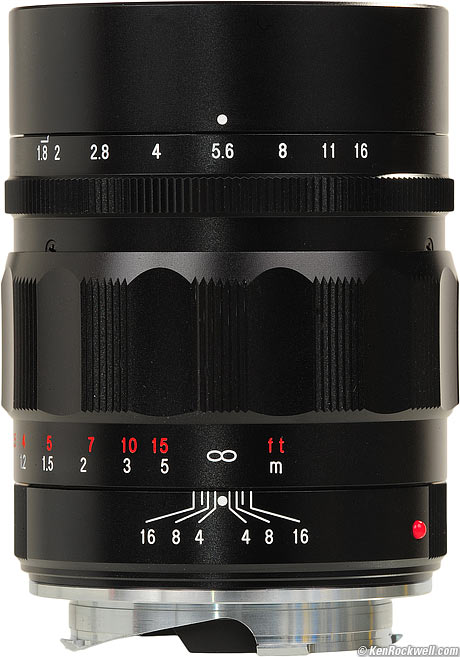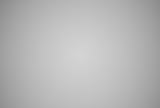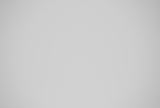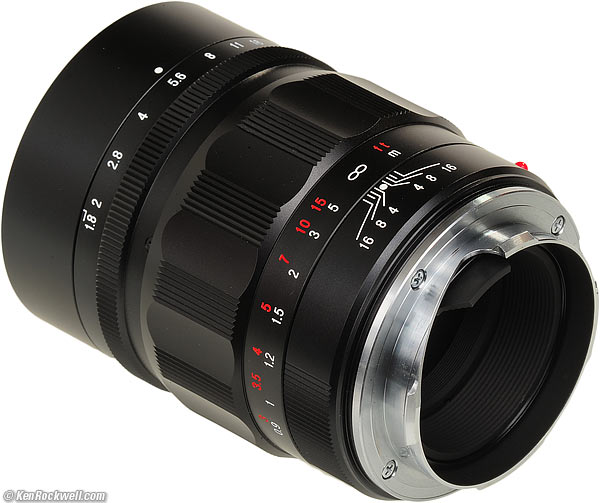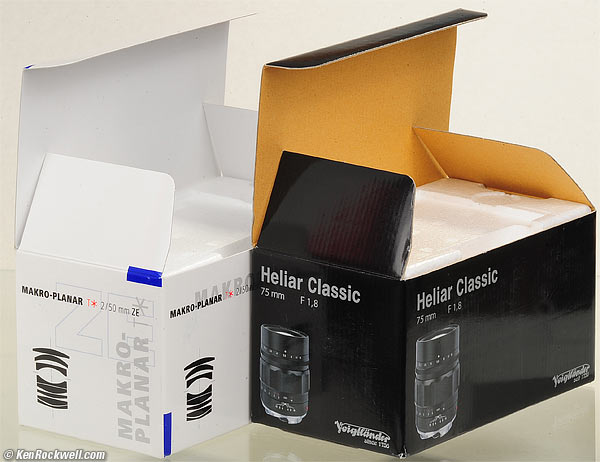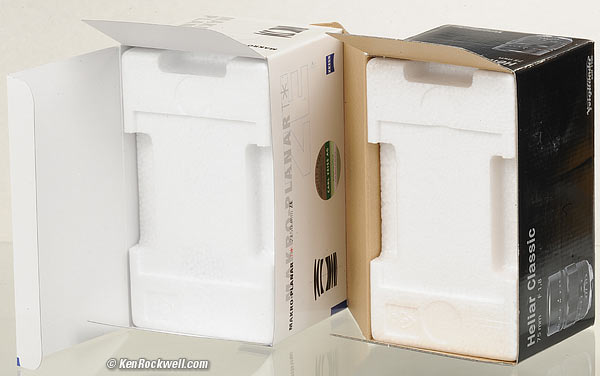Home Donate New Search Gallery Reviews How-To Books Links Workshops About Contact
Voigtländer 75mm f/1.8
LEICA M Mount Heliar Classic (2010-)
© 2011 KenRockwell.com. All rights reserved.
Intro Specs Performance Compared Recommendations
Voigtländer 75mm f/1.8 (52mm filters, 14.9 oz. /423g, about $715). enlarge. This free website's biggest source of support is when you use these links, especially these directly to it at Adorama or at eBay (see How to Win at eBay) when you get anything, regardless of the country in which you live. It helps me keep reviewing these specialized lenses when you get yours through these links, thanks! Ken.
August 2011 Voigtländer Reviews LEICA LEICA Lenses All Reviews
Introduction top
Intro Specs Performance Compared Recommendations
|
I buy only from these approved sources. I can't vouch for ads below. |
The Voigtländer 75mm f/1.8 lens for LEICA is pretty good. It feels great, has swell bokeh, is very well made, handles well, focuses perfectly at f/1.8 and is sharp. The Voigtlander 75/1.8 is a fun little lens, and the lightest (only by 7 grams) fast tele you can get for LEICA at any price.
75mm is a queer focal length for LEICA. LEICA's best cameras like the LEICA M3 have no 75mm finders. Only LEICA's newest cameras (1980 and newer) have 75mm finder frames. Even if your LEICA has a 75mm frame, Leica's 75mm frames are only crummy little corner segments inside the 50mm frames. LEICA shooters use 90mm, not 75mm, lenses, for which every LEICA since 1954 has had an integrated finder.
I wouldn't buy any 75mm lens for my LEICA because of the finder issue, but if you want a lens for a lot less than any LEICA 75mm lens new or used, this is a great idea, but only loons try to save money on lenses for late-model LEICAs.
Sometimes two wrongs really do make a right. The LEICA M9's finder is so sloppily inaccurate that it includes much more than will actually be in your image, usually leading to weak, loose compositions. In the case of a 75mm lens, the M9 includes much more than seen in its 75mm frame, so much so that at longer distances, the M9's 50mm frame is more accurate! The 50mm frame of an M9 shows more than you'll get, but with a little practice you'll be able to know exactly what you'll get in your image, and be able to use the better 50mm frame instead.
This lens also uses a queer 52mm filter size, not shared with any other LEICA lens, so be prepared to carry another set of filters just to provision this lens. This is another reason I wouldn't buy this, but so what, if you're only shooting digitally, you may not even use filters or caps.
If the size, weight or qualities other than price attract you to this lens for your M9, by all means get one.
However, if you have an M9 and are just trying to save money on lenses instead of getting the LEICA APO-SUMMICRON 90mm f/2 ASPH or LEICA APO-SUMMICRON-M 75mm f/2 ASPH you really want, you bought the wrong camera. In the long scheme of things, the cost of owning a LEICA APO ASPH is less than nothing: it only goes up in value with time, while the value of a used digital LEICA drops out of the sky faster than a fuel-starved Gulfstream G550.
Voigtländer 75/1.8. enlarge.
Compatibility
Mount
This LEICA-M mount lens works perfectly on every LEICA M ever made, from the LEICA M3 of 1954 through today's LEICA M9.
Of course you'll need an external 75mm finder for LEICAs made before about 1980, as these LEICA have no 75mm finder frames.
This 75mm lens calls up the 50mm frame or 50/75mm frame pair. If you have no 75mm frame lines, just imagine the 75mm frame.
It also works on every other LEICA M mount camera, like the Zeiss Ikon and those dirty little Voigtländers.
It is not coded into the LEICA M9's database, and it of course has no Leica 6-dot markings on its mount. Therefore, you'll have to select either the 75/2 APO or 75/1.4 options in your M9's lens menus if you want "75mm" coded into your M9's EXIF data. I wouldn't worry about any differences between this lens' falloff and the Leica lens' falloff disturbing anything if you use one of these profiles. I used the 75/2 APO profile and it works great. Unlike wide lenses, there is so little falloff in longer lenses that it's not a problem.
Metering
TTL meters in cameras like the CLE, Zeiss Ikon, Konica Hexar RF, LEICA M6, LEICA M6 TTL, LEICA M7, and LEICA M9 work fine with this lens.
Specifications top
Intro Specs Performance Compared Recommendations
Optics top
6 conventional spherical elements in 3 groups.
Multi-coated.
Diaphragm top
Voigtländer 75mm f/1.8 at f/5.6. enlarge.
10 straight blades.
Stops down to f/16.
Half-stop clicks.
Close Focus top
0.9 meters (3 feet).
Angle of View top
33.2º
Caps top
Voigtländer includes a plastic rear M cap, and a plastic 52mm pinch-type front cap.
No cap is included for the hood, but the 52mm cap will attach with the hood reversed.
With the hood ready to shoot, a standard Nikon 58mm cap fits great.
Size top
Voigtländer specifies 73.8mm (2.9") long by 57.9mm (2.3") diameter.
Weight top
14.935 oz. (423.3g), measured.
Voigtlander specifies 15 oz. (427g).
Hood top
Voigtländer 75mm f/1.8 with hood. enlarge.
A reversible screw-in clamp-on metal hood is included.
The hood clamps-on to a threaded ring. Thread the ring into the lens, and the hood clamps-on and rotates to the threaded ring.
Likewise, the hood may be reversed and clamped-on again to the threaded metal hood mounting ring.
Reversing hoods is for saps. I would leave the hood erect all the time, and pop a Nikon 58mm cap over the erect hood as needed. Actually, I'd use a filter, and forget caps.
Made in top
Japan.
Introduced top
20 August 2010.
Scope of Delivery top
You get the lens, caps, hood and a folded sheet of instructions.
Microcorrugated cardboard box.
Performance top
Intro Specs Performance Compared Recommendations
Overall Bokeh Diaphragm Calibration Distortion Ergonomics
Falloff Filters Finder Blockage Focus Lateral Color Fringes
Materials & Construction Sharpness Spherochromatism Sunstars
Overall performance top
The Voigtländer 75mm f/1.8 is always sharp in the center, but if you're counting pixels (few LEICA photographers are), the 75/1.8 is softer in the far corners at f/1.8.
Bokeh performance top
Bokeh, the character of out of focus backgrounds, not simply how far out of focus they are, is pretty good. This Voigtlander is better than most LEICA lenses, and so much better than the abysmal bokeh of the Voigtlander 50mm f/1.1.
Here are reduced 1,000 x 1,000 pixel crops from 18 MP (5,216 x 3,472) pixel LEICA M9 images, focused on a reference phase lattice at 3 meters (10 feet) with synthetic reference vegetation at 15 meters (50 feet).
In other words, these crops are about 1/4 of the height or width of the original full-frame images:
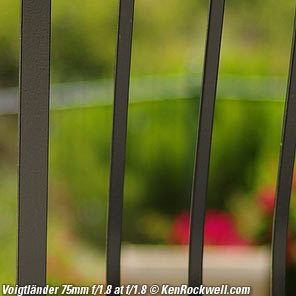 |
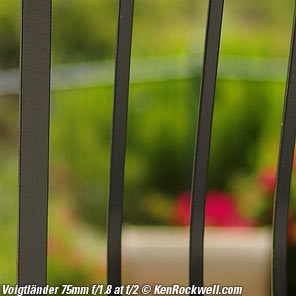 |
 |
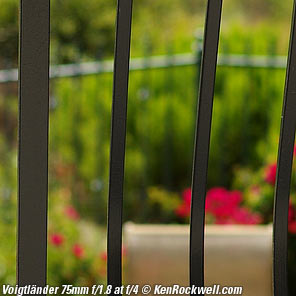 |
Bokeh is organic; as we see from older lens designs:
Katie. LEICA M9, ISO 200, 1/125 at f/1.8, sides cropped. bigger. another sample.
Diaphragm Calibration performance top
The calibration is right-on: the meter in my M9 tracks each half-stop click perfectly throughout the entire range.
Distortion performance top
The Voigtländer 75mm f/1.8 has slight barrel distortion.
Use this coefficient to correct it in Photoshop's lens distortion filter for critical use.
Distance |
Coefficient |
10' (3m) |
+1.0 |
© 2011 KenRockwell.com. All rights reserved.
Ergonomics performance top
Voigtländer 75mm f/1.8. enlarge.
Ergonomics are wonderful.
Focus is silky-smooth and has no play. It feels exactly like a good LEICA lens, and better than LEICA's budget SUMMARIT line.
I prefer the 360º ridges of modern LEICA Lenses over the fluted design of this lens. With this lens, I'm always fumbling to get my finger tips up on the tops of the ridges.
The aperture ring moves with a fingertip. It has a detents at half stops as do LEICA lenses.
The worst thing about this lens ergonomically is that the red mounting dot and red numbers are almost invisible. I shoot my product shots with boosted saturation that makes these red numbers more easy to read here than they actually are.
This is how the red numbers and mounting dot really look under most light:
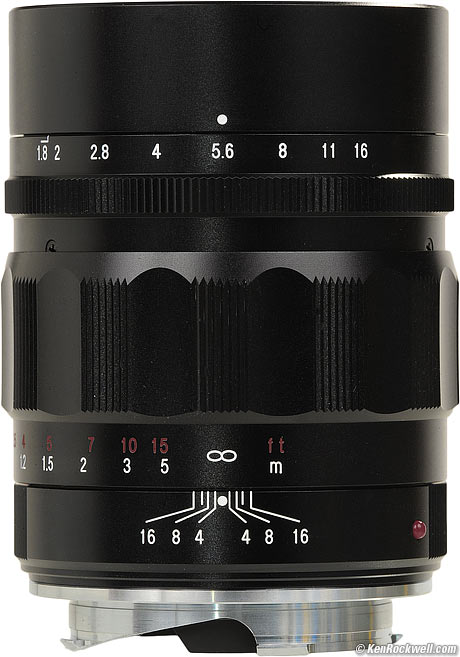
Actual colors, Voigtländer 75mm f/1.8.
Falloff (darker corners) performance top
Falloff is minor on a LEICA M9.
I've made this more obvious by shooting a gray field and presenting these against a gray background:
Voigtländer 75mm f/1.8 falloff on full-frame M9 at infinity, no lens profile:
© 2011 KenRockwell.com. All rights reserved.
|
Filters, use with performance top
Any standard or thick rotating 52mm filter works great, with no vignetting. 52mm is generous, but a weird size for LEICA.
With a step-down ring, 46mm filters ought to work pretty well, too.
Finder Blockage performance top
Finder blockage is minor. You'll lose just a bit of the lower right corner at infinity, and lose a little bit more at closer distances or with the hood.
Focus performance top
Focus is beautifully smooth and silky. It's at least as good as LEICA's best lenses, in fact, it feels better than the focus of my LEICA APO-SUMMICRON-M 90mm f/2 ASPH, mostly because this 75mm lens has less glass to move around.
Focus accuracy, at least on the M9 with which I tried this lens, is pleasantly perfect. Every shot made at f/1.8 was in perfect focus, better also than my LEICA APO-SUMMICRON-M 90mm f/2 ASPH.
Focus accuracy will vary with time, temperature, and with every individual sample of lens and every individual sample of camera. Your experience will vary.
Lateral Color Fringes performance top
The 75/1.8 has some slight green/magenta secondary color fringes. I never saw them except when shooting things likely to excite them, and then only by looking closely.
There is also some spherochromatism, but that's a different aberration.
Materials and Construction performance top
Rear, Voigtländer 75mm f/1.8. enlarge.
This Voigtländer is very well made; just as well made as the Zeiss lenses made in the same factory.
Honestly, it feels just as good as LEICA lenses even if I don't prefer the styling. I'll bet that in 30 years, these Japanese lenses will have less internal fog and still have viable lubrication, while LEICA lenses will need internal cleaning and relubrication.
Filter threads
Black anodized aluminum.
Barrels, aperture and focus rings
Black anodized aluminum.
Focus helicoids
Seem like brass.
Mount
Chromed brass.
Markings
Engraved and filled with paint.
Serial Number and "Made in Japan"
Engraved on bottom of barrel and left in black.
Red index dot
Plastic ball.
Sharpness performance top
The more you know about photography, the more you know that lens sharpness doesn't matter.
This Voigtländer lens is sharp and contrasty in the center at all apertures, presuming you have perfect focus, which will vary from camera to camera.
It's softer in the corners wide open, and sharpens up as stopped down. f/8 is optimum for the corners.
If you really want sharp, nothing on earth compares to the LEICA APO-SUMMICRON 90mm f/2 ASPH or LEICA APO-SUMMICRON-M 75mm f/2 ASPH, which are just as sharp wide-open as they are stopped-down.
Spherochromatism performance top
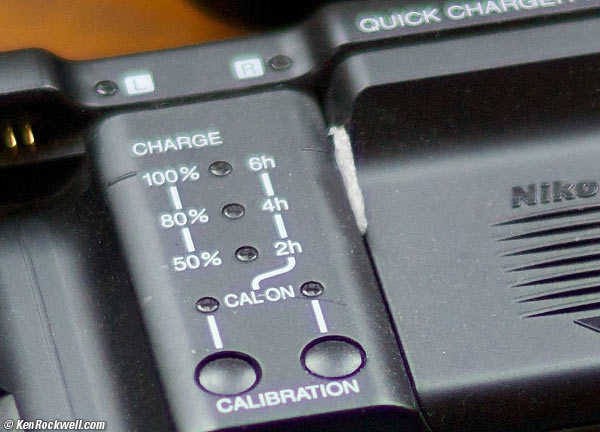
Tight crop from a much larger image, showing spherochromatism.
Like many fast, long lenses, the Voigtländer 75mm f/1.8 shows some spherochromatism.
This aberration, called "color bokeh" by laymen, renders mild green color fringes around background highlights, and magenta color fringes around foreground highlights.
If you're not in perfect focus, it will put these color fringes on your subject. It's not the lens' fault; it's yours for not being in perfect focus.
In this sample, focus is on the CAL label on the battery charger. You can see the green fringes in the rear. This helps bokeh in practical shooting, with foliage for backgrounds.
Sunstars performance top
With its straight 10-bladed diaphragm, the Voigtlander 75/1.8 ought to make 10-pointed sunstars on brilliant points of light.
Compared top
Intro Specs Performance Compared Recommendations
I borrowed a ZEISS 50mm f/2 Makro Planar ZE to review at the same time as this lens.
I've known that they are both made by Cosina in the same factory with the same too-dark red paint and similar cosmetics, but it never struck me before that they even use the same boxes and packing materials!
The Zeiss 50mm lens costs $1,300!
Recommendations top
Intro Specs Performance Compared Recommendations
This Voigtländer 75mm f/1.8 is a fun little lens. If you don't have the same aversions to all 75mm lenses as I do, by all means, get one.
If you use the hood, use a Nikon 58mm cap over it, which will save you having to reverse the hood for storage.
It is false economy to get this lens for the LEICA M9. If you can afford an M9, you deserve and should demand only the LEICA APO-SUMMICRON-M 75mm f/2 ASPH or LEICA APO-SUMMICRON 90mm f/2 ASPH, which cost only a tiny fraction over time as your M9 will cost you, and your lenses will be serving you and your survivors for many, many future decades.
For use with less expensive cameras, go for it. This Voigtlander is a swell lens.
For about the same money, also consider a used LEICA ELMARIT-M 90mm f/2.8 or a used LEICA 90mm f/2. The f/2.8 has superior sharpness and distortion, while the 90/2 has the speed, and if you buy used, costs less to own over time.
Personally, as a nature and landscape shooter, I'd get a used LEICA 90/2.8 for this money, but for people photography, this 75/1.8 gives awesome results.
If you've found my work here helpful, this free website's biggest source of support is when you use these links, especially these directly to it at Adorama or at eBay (see How to Win at eBay) when you get anything, regardless of the country in which you live. It helps me keep reviewing these specialized lenses when you get yours through these links, thanks! Ken.
Help me help you top
I support my growing family through this website, as crazy as it might seem.
The biggest help is when you use any of these links to Adorama, Amazon, eBay, B&H, Ritz, Calumet, J&R and ScanCafe when you get anything, regardless of the country in which you live. It costs you nothing, and is this site's, and thus my family's, biggest source of support. These places have the best prices and service, which is why I've used them since before this website existed. I recommend them all personally.
If you find this page as helpful as a book you might have had to buy or a workshop you may have had to take, feel free to help me continue helping everyone.
If you've gotten your gear through one of my links or helped otherwise, you're family. It's great people like you who allow me to keep adding to this site full-time. Thanks!
If you haven't helped yet, please do, and consider helping me with a gift of $5.00.
As this page is copyrighted and formally registered, it is unlawful to make copies, especially in the form of printouts for personal use. If you wish to make a printout for personal use, you are granted one-time permission only if you PayPal me $5.00 per printout or part thereof. Thank you!
Thanks for reading!
Mr. & Mrs. Ken Rockwell, Ryan and Katie.
Home Donate New Search Gallery Reviews How-To Books Links Workshops About Contact
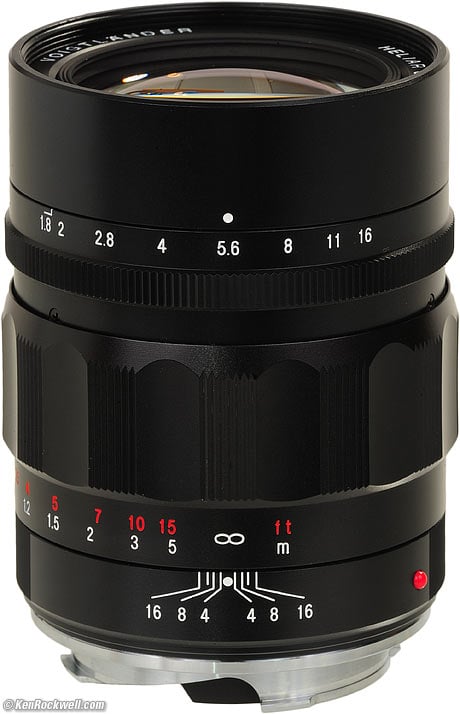





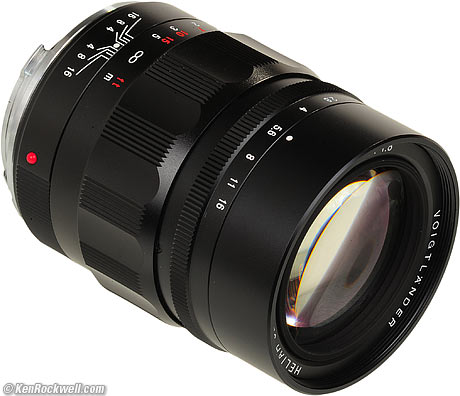
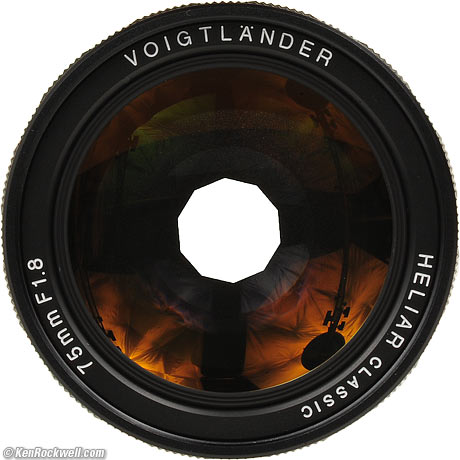
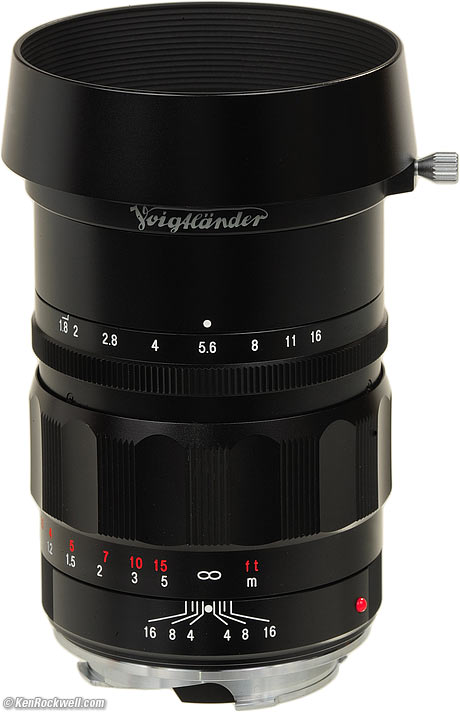

-0600.jpg)
